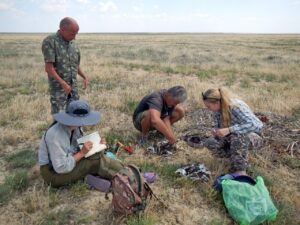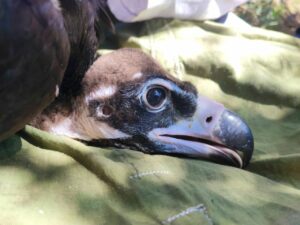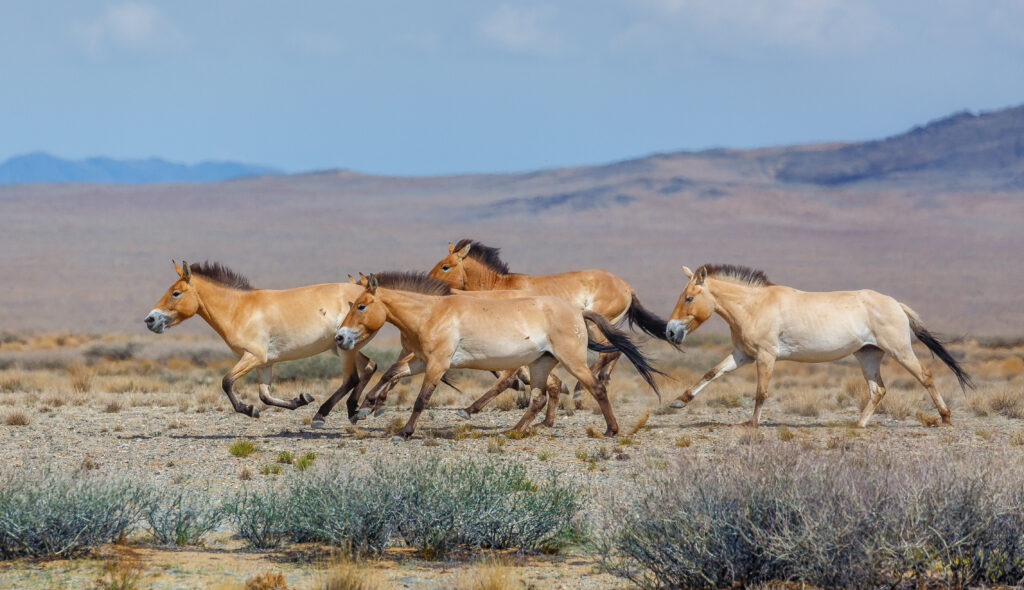Summer 2024 fieldwork – horses, birds, and bats, oh my!
 We are nearing the half-year mark since we started this new chapter. During that time, we have established and strengthened relationships with partners in Kazakhstan, promoted wildlife-focused initiatives, and told stories about the region’s wildlife.
We are nearing the half-year mark since we started this new chapter. During that time, we have established and strengthened relationships with partners in Kazakhstan, promoted wildlife-focused initiatives, and told stories about the region’s wildlife.
Here are a few highlights:
Przewalski’s horses: Homecoming
In June we reported on the return of Przewalski’s horses to their native habitat in the Kazakhstan steppes, marking the first time in nearly 200 years that these wild horses could graze their ancestral steppe grasslands. Seven horses were transported from Czechia to a reintroduction center in central Kazakhstan, the first phase of a multinational project that aims to transport a total of 40 horses to central Kazakhstan over the next five years. Experts view the reintroduction of these equines to Kazakhstan as a wildlife and biodiversity conservation milestone that will help to restore Kazakhstan’s unique steppe ecosystems.
Fieldwork updates
We’re pleased to share fieldwork updates from two partners—the Manul Working Group and the Biodiversity Research and Conservation Center's (BRCC) raptor research team.
Camera traps have become indispensable research tools for wildlife conservationists, allowing scientists to collect data and expand knowledge about a species and its habitat. For elusive creatures like the Pallas’s cat (also known as manul), data from camera traps is especially critical to determining the size and health of the population, learning more about their behavior, and better understanding of the threats they face—essential for protecting the species. In April we appealed to you to support fundraising for the Manul Working Group’s “Adopt a Camera” campaign to purchase cameras for installation in central Kazakhstan and Mongolia, habitats of the cat. To date, the campaign has raised sufficient funds to purchase 38 wildlife cameras with reserve funds going to support expedition costs related to field use of the cameras. Donations are still being accepted to support expedition costs - fuel, battery packs, camp meals, etc. We have a special deal to purchase high quality, tested camera traps for just $65 apiece!
As spring migration wrapped up, BRCC researchers criss-crossed Kazakhstan and Uzbekistan, visiting known and newly-discovered nest sites to see if nests were in use, banding young birds, and deploying tiny data-logger “backpacks” on carefully chosen young birds. Data-loggers are expensive but produce a wealth of information: location, windspeed, elevation, temperature, and so much more. Powered by tiny solar panels, they transmit data using cell phone networks, so we can see their movements every day.
 This year the team placed 40 data-loggers (!!!) on a variety of large raptors: Egyptian vulture, golden eagle, White-tailed Eagle, steppe Eagle, cinereous Vulture (aka black vulture, for the first time in Central Asia!), black kites and long-legged buzzards.
This year the team placed 40 data-loggers (!!!) on a variety of large raptors: Egyptian vulture, golden eagle, White-tailed Eagle, steppe Eagle, cinereous Vulture (aka black vulture, for the first time in Central Asia!), black kites and long-legged buzzards.
Soon, raptor team members will begin to catch their breath, counting and mentally waving goodbye to adult and juvenile birds as they wing their way across Eurasia once again to wintering sites anywhere from India to the Arabian peninsula to northern Africa. Birds carrying data-loggers will show us their explorations and favorite roosts.
What’s Next? Our partner BRCC is developing expertise in bat conservation, adding another area to its portfolio of conservation projects in Kazakhstan. We recently published a primer on these flighted mammals; little is known about bats in Kazakhstan - it’s hard to study creatures that are mostly nocturnal, misunderstood, and hide themselves away to sleep during the day. To start, the ornithology team is making anecdotal observations of bat activity and trying to detect bat activity with an acoustic detector. Together, we are planning to work with international bat biology and conservation professionals in the coming year in order to learn which species are found in Kazakhstan, learn about their behaviors, identify threats, and start a conversation about bat protection measures. Believe it or not, bats are incredibly important when it comes to protecting agricultural crops from insects, in addition to providing many other crucial services!
In September, we have a new initiative supporting the Shakpak Bird Banding Station in southern Kazakhstan. This station is operated by the Kazakhstan Institute of Zoology and has tracked bird migration for over 40 years. Our support this year will facilitate bird safety improvements at the station and also investigate the spread of viral diseases among birds. Stay tuned for a full report!
There is a lot going on, which means we did a great job of hitting the ground running when we launched this organization. As always, we love to hear from you. Contact us to share ideas, ask questions, and tell us what interests you about Kazakhstan and its wildlife. Your donation to support wildlife protection programs is welcome as well.

Photo by Miroslav Bobek, Prague Zoo
